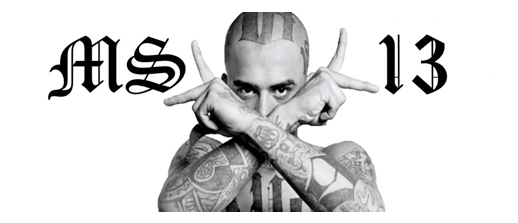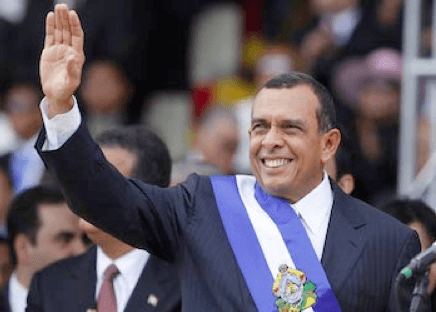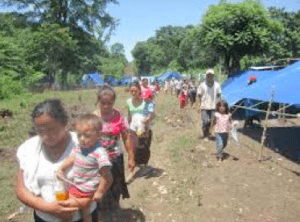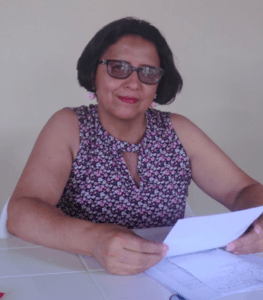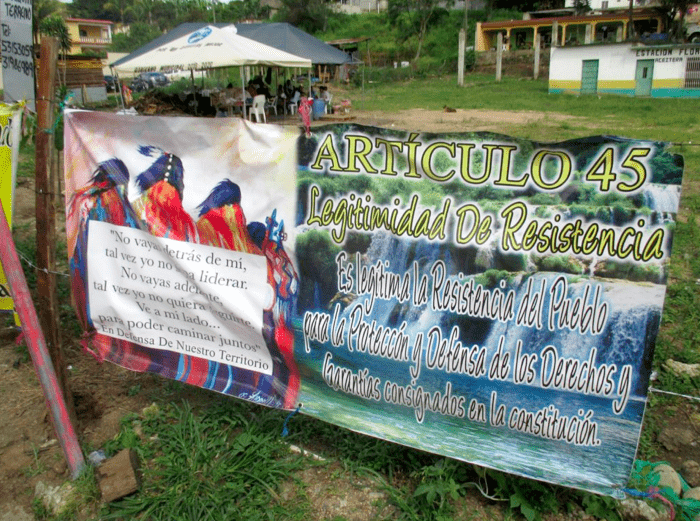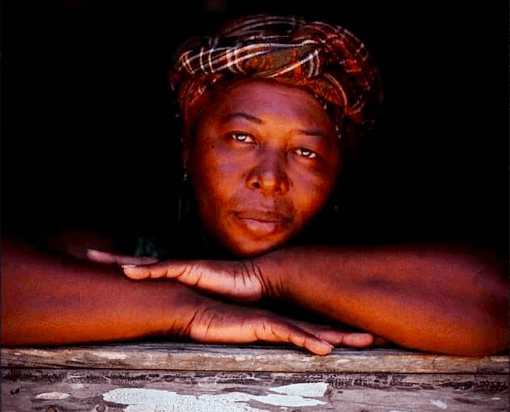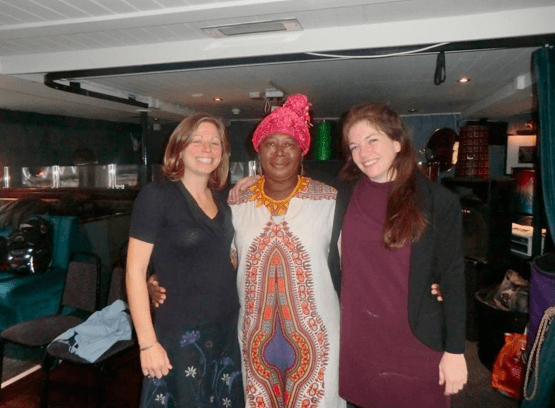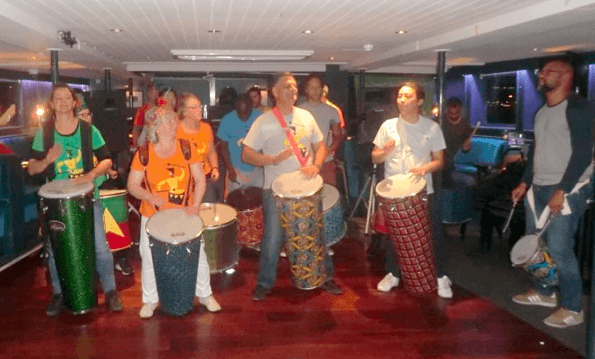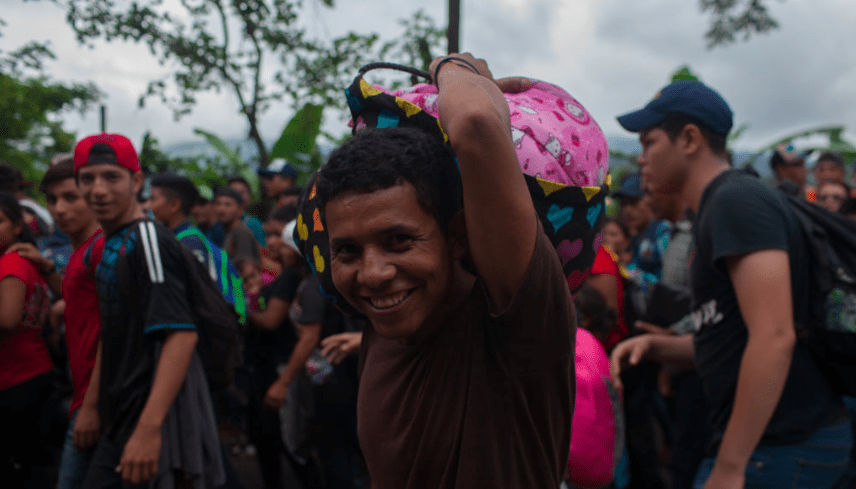I am grateful to Sandra Cuffe for permission to reproduce the following article. Sandra is a freelance journalist based in Central America, where she covers environmental, indigenous, and human rights issues.
By Sandra Cuffe | February 1, 2017
https://news.mongabay.com/2017/02/honduran-politicians-u-s-aid-implicated-in-killings-of-environmentalists/
Global Witness, a London-based NGO, published a report yesterday examining the involvement of government officials and foreign aid in violent conflicts over mining, hydroelectric, tourism, and palm oil projects in Honduras. The result of a two-year investigation, the report includes several case studies and a series of recommendations for the Honduran and U.S. governments.
“We do an annual report to document the situation globally, and Honduras per capita has come out on top for the last few years. More than 120 land and environmental defenders have been killed in Honduras since 2010, so we wanted to investigate the reasons behind that,” Global Witness campaigner Ben Leather told Mongabay.
The issue was thrust into the global spotlight in March 2016, when Berta Cáceres, a well-known Honduran indigenous rights activist and Goldman environmental prize winner, was gunned down in her home. She had been receiving threats related to her work with communities opposing the construction of the Agua Zarca hydroelectric dam in western Honduras, and suspects arrested in connection with her killing include individuals with ties to the Honduran military and to DESA, the company behind the dam project.
The new Global Witness report, ‘Honduras: The deadliest place to defend the planet’, examines the Agua Zarca case and other hydroelectric dam projects in western Honduras, a hotel and golf tourism complex in indigenous Garifuna territory along the northern coast, and mining and logging activities. Regardless of where in the small Central American country of eight million the projects are located, similar patterns of indigenous and human rights violations emerge.
Allegations of corruption
“What we’ve uncovered is that there’s an awful lot of corruption around these mega-projects, these big investment projects, whether that’s mining, whether that’s hydroelectric, whether it’s logging, or whether it’s luxury hotel projects,” Leather said. “These projects are being imposed on communities, which is why they need to mobilize in the first place. And then that same corruption means activists can then be killed with impunity,” he said.
In some cases, allegations of corruption go to the highest echelons of the Honduran government. Global Witness highlights the case of Gladis Aurora López, president of the ruling National Party and vice president of Congress. Her husband, Arnold Castro, is the director of a company behind two contested hydroelectric dam projects in the La Paz department of Honduras that were granted licenses while López was a member of Congress.
Local community activists also implicate López in manipulations of a consultation process concerning the Los Encinos dam, and allege she ordered a violent police intervention in a community resisting the dam, according to Global Witness. Several Indigenous Lenca Movement of La Paz (MILPAH) members actively opposing the dam have been attacked and killed.
Global Witness is calling on the Honduran government to investigate and prosecute López. “We think that the prosecution of some of the higher level people linked to these abuses would send a strong signal that the Honduran government won’t tolerate corruption and won’t tolerate this violence against defenders,” said Leather.
Mongabay was unable to reach López before press time. However, in a letter to Global Witness, she denied any link to attacks against leaders and communities opposing hydroelectric dam projects. According to Global Witness, López’ husband also denied any illegal activity by his company and any ties to attacks.
In the case of the Los Encinos dam, the problem began shortly after the Honduran Congress granted its license, according to MILPAH president Felipe Benítez. The mayor of the municipality of Santa Elena, also affiliated with the ruling National Party, began offering all kinds of little projects and aid to local party members, creating divisions and turning them against community leaders and activists opposing dams, he said.
“Since then, there has been a serious problem of persecution, threats, harassment, and defamation, and also the problem of criminalization,” Benítez told Mongabay. Dozens of indigenous community council leaders and MILPAH members face criminal charges related to conflicts over lands and natural resource projects, he said.
Global Witness references reports of the killings of three local activists opposing the Los Encinos dam; two of their bodies were mutilated. Benítez’ own nephew was found murdered in December 2015.
Two months earlier, in October 2015, outspoken dam opponent and MILPAH leader Ana Miriam Romero allege she and her sister-in-law were beaten by a group of police, soldiers and civilians in Romero’s home while guns were drawn on her children. Both women were pregnant at the time and Romero’s sister-in-law miscarried following the beating, according to reports referenced by Global Witness. In January 2016, Romero’s home was allegedly the target of an arson attack and she lost most of her belongings.
“We’ve been persecuted and criminalized, and the situation here is terrible,” Benítez said. “A serious danger we face as defenders is that human rights aren’t respected. For example, we have 14 members of MILPAH with precautionary measures from the Inter-American Commission on Human Rights, but not long ago the police shot Victor Vásquez.”
A member of MILPAH and the president of one of the local indigenous councils, Vásquez was shot in the leg by police on January 13, 2017 during the eviction of a community in another municipality in the La Paz department, according to Benítez and human rights group reports. On paper, Vásquez is one of the beneficiaries of an IACHR request to Honduras for precautionary measures. Benítez says he now faces three months of rest and recovery due to the police gunshot.
International involvement
Hydroelectric dam project backers appear to go beyond local companies and Honduran government officials. Global Witness points to international finance institutions such as the Central American Bank of Economic Integration, the Inter-American Development Bank, and the World Bank Group’s private sector arm, the International Finance Corporation (IFC), as all having played a role in the hydro sector in Honduras. Multilateral institutions have also supported other controversial projects linked to attacks and killings.
In 2009, the IFC invested 30 million dollars in Corporación Dinant, a large Honduran palm oil and food company controlled by powerful landowner and business magnate Miguel Facussé until his death in 2015. Palm oil plantations tied to Dinant and other landowners in the Lower Aguan region of the Colón department have been the subject of years of land conflicts, with Global Witness confirming at least 82 activists fighting for land rights in the area were killed between 2010 and 2013.
Killings have continued in the ensuing years. When Global Witness interviewed the head of a special task force (unnamed in the report) that is investigating killings in the region, he revealed that many more people have been killed than were previously documented.
“His team is investigating 173 murder cases between 2010 and 2013, of which 18 or 19 are of private security guards and six are not land-related. The rest – at least 148 deaths – are believed to be of [farmers] killed in the struggle to defend their land,” the report’s authors wrote.
Local farmworkers’ and land rights groups accuse Dinant, other landowners, and Honduran security forces of involvement in death squads and paramilitary groups operating in the region and perpetrating many of the killings. Dinant and the Honduran military refute these claims.
Given the involvement of the IFC, local organizations took their concerns to the World Bank Group’s Compliance Advisor Ombudsman (CAO), which determined in December 2013 that the IFC had violated its own environmental and social guidelines when it made the decision to finance Dinant. In response, the IFC and Dinant developed an ongoing action plan to address the CAO report’s findings.
“IFC continues to work closely with Dinant and its external experts to support measures that reduce tensions in the communities in which the company operates and work towards peaceful co-existence,” an IFC spokesperson told Mongabay via email. Dinant has adopted new policies and procedures related to security management, human rights, and community engagement, according to the IFC spokesperson.
Despite the new policies, alarming human rights violations continue in the Aguan region, according to Honduran human rights organizations monitoring the situation in the region. On June 19, 2016, young farmers Allan Martínez and Manuel Milla were murdered in front of dozens of people on the soccer field in the community of Panama. And on October 18, 2016, Aguan United Farmers’ Movement (MUCA) president José Ángel Flores and MUCA member Silmer George were shot and killed. The Agrarian Platform, an umbrella group of local farmers’ and land rights organizations, alleged paramilitary groups operating in the region were responsible for the June and October killings.
Three months after Flores and George were killed, the situation remains the same, according to the Agrarian Platform.
“Arrests have not been made of the material authors despite the existence of arrest warrants, according to a report by the Lower Aguan Violent Death Unit, and so the paramilitary group continues to operate in the La Confianza settlement, sowing terror and fear among the population,” the Agrarian Platform wrote in a January 19, 2017 statement.
The U.S. is the largest single IFC shareholder and is an influential shareholder in the Inter-American Development Bank, Global Witness points out in its new report.
“We think that these international finance institutions, as well as the principal shareholders in them like the US, have a vital role to play in safeguarding that their money is not investing in projects that ultimately end up with activists being silenced,” said Global Witness campaigner Ben Leather. He added that they must first ensure meaningful consultation and consent from affected communities, and also to freeze funding if activists are threatened.
The U.S. government’s Overseas Private Investment Corporation (OPIC) has also invested 22.5 million dollars in the FICOHSA Bank, which has backed Dinant and other controversial enterprises, Global Witness notes in its report. The report also highlights the support of the U.S. Embassy in Honduras for U.S. investors in conflict-ridden sectors such as the mining industry, and the tens of millions in U.S. aid for Honduran military and police forces, which have been implicated in numerous human rights violations in the country.
One of the report’s recommendations to the U.S. government, however, to “increase funds dedicated to the protection of human rights defenders and civil society space in Honduras,” was fulfilled even before the report was made public. Just days before the report’s release, U.S. Ambassador to Honduras James Nealon announced that the U.S. is contributing 2.9 million dollars to the Honduran protection mechanism for human rights defenders and journalists.
According to a U.S. State Department spokesperson, the United States consistently raises human rights concerns with the Honduran government and works with it to address them. Impunity and corruption pose significant challenges to the country’s institutions, but the Honduran government has demonstrated the political will necessary to tackle security and development challenges, the spokesperson told Mongabay.
Capacity for change, but lack of political will
The Honduran government’s political will is a key point of contention. In September 2016, the U.S. State Department certified that the Honduran government complied with human rights conditions placed on aid to Honduras in the Appropriations Act for the 2016 fiscal year. The move was met with criticism from NGOs and U.S. members of Congress, given the ongoing killings and impunity. More than 40 members of Congress have co-sponsored the Berta Cáceres Human Rights in Honduras Act (HR 5474), a proposed bill to suspend all aid to Honduran police and military forces until five clearly defined criteria concerning human rights and justice have been met.
In the high-profile case of the March 2016 murder of Cáceres, seven suspects, including members of the Honduran armed forces and a hydroelectric dam company staff, have now been arrested. The developments shine some light on the question of the Honduran government’s capacity and will to effectively address human rights violations, according to Leather.
“I think on the one hand it shows that the Honduran government has some capacity to deal with this, which means that it’s more a question of political will,” he said.
“Beyond the Berta Cáceres case, there are several examples of where the authorities have made arrests, either for attacks against defenders or because of abuses of laws around consultation of communities, for example. So they do have some capacity, but they haven’t shown the political will yet to use that capacity across the board, and above all, to arrest the intellectual authors of these crimes as well,” Leather said. “And we’re convinced in the case of Berta Cáceres that the intellectual authors – those who ordered the attack – haven’t been arrested, even though we of course celebrate the fact that some of the trigger men have.”
The Global Witness report published yesterday focuses on Honduras, but similar forces are at play throughout Latin America. Already this year, indigenous and community activists opposing hydroelectric dams, mining, and logging reportedly have been killed in Colombia, Guatemala, and Mexico.
Like Berta Cáceres, Isidro Baldenegro was a past recipient of the prestigious Goldman environmental prize. An indigenous Tarahumara community leader and farmer, he was awarded the honor for his work organizing to protect Mexico’s Sierra Madre mountains from illegal logging. After years of threats, he was shot and killed earlier this month.
“He was threatened by people associated with the loggers, who were logging in his community. He was threatened by organized crime. But he was also imprisoned by the Mexican state as well, on charges that ultimately turned out to be false,” Leather said.
“I think it shows the same collusion between the state, business, and criminal elements to silence those who are demanding their rights,” he said. “I would say that is the case across the Americas, albeit in Honduras it’s at the worst levels of violence.”
*******
https://news.mongabay.com/2017/02/honduran-politicians-u-s-aid-implicated-in-killings-of-environmentalists/
Mongabay is an environmental science and conservation news and information site. Mongabay seeks to raise interest in and appreciation of nature and wildlife, while examining the impact of emerging trends in climate, technology, economics, and finance on conservation and development.
